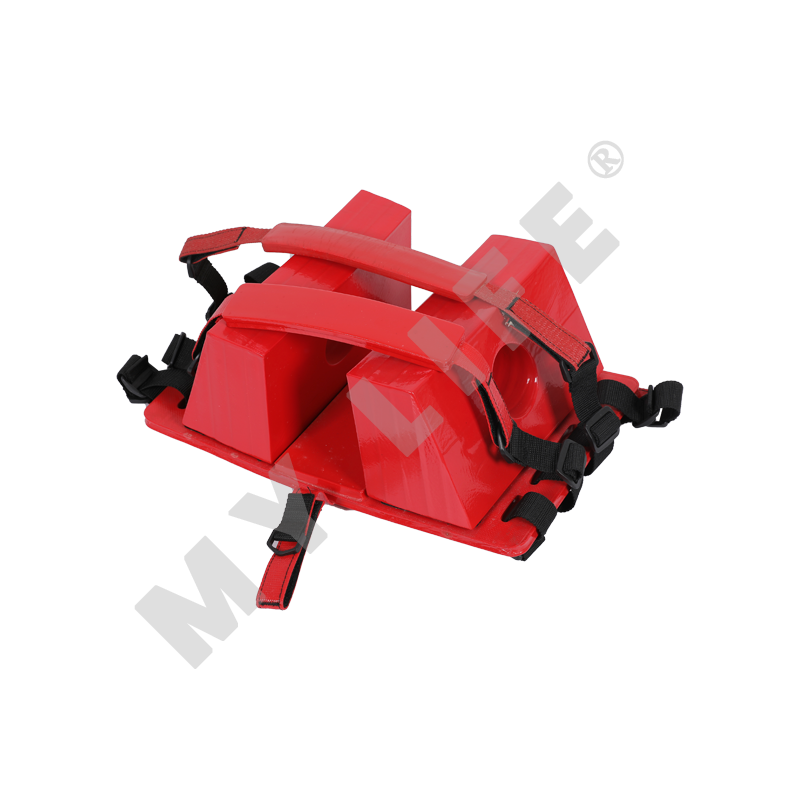Head immobilizers are crucial in maintaining spinal alignment
Head immobilizers are vital tools in the realm of emergency medical services and healthcare. They serve a primary function in maintaining spinal alignment, especially when dealing with patients who may have suffered trauma or injuries to the head, neck, or spine. This article explores the significance of head immobilizers in preventing further damage and maintaining spinal alignment, providing an in-depth understanding of their purpose, design, and usage.

The Spinal Cord and Its Importance
The spinal cord is a critical component of the human body's central nervous system, connecting the brain to the rest of the body. It plays a fundamental role in transmitting sensory information from the peripheral nerves to the brain and relaying motor commands from the brain to the muscles. Given its vital functions, protecting the spinal cord is of paramount importance.
Spinal Cord Injuries and Their Consequences
Injuries to the spinal cord can have severe and life-altering consequences. Damage to the spinal cord can result in paralysis, loss of sensation, and a range of other debilitating conditions. The severity of spinal cord injuries is often determined by the level and extent of the damage. Maintaining proper spinal alignment is crucial to minimizing the risk of further injury in such cases.
The Role of Head Immobilizers
Head immobilizers are devices designed to secure a patient's head and neck in a stable and aligned position. They are widely used in the field of emergency medicine and trauma care. These devices play a crucial role in ensuring that the patient's head remains stationary during transportation and medical examinations, which is essential for preventing further harm to the spine.
Key Components of Head Immobilizers
Head Blocks: Head immobilizers typically consist of two head blocks, one placed on each side of the patient's head. These blocks are designed to cradle the head, providing support and maintaining alignment.
Straps: Straps are used to secure the head blocks in place. They are adjustable to accommodate different head sizes and shapes. Straps are an integral component of head immobilizers, ensuring that the patient's head does not move.
Chin Straps: In addition to the main straps, chin straps are used to secure the patient's chin and prevent head movement. This extra level of stability is essential for maintaining spinal alignment.
Maintaining Spinal Alignment
Proper spinal alignment is critical in the context of head and neck injuries. When an injury is suspected, medical professionals aim to keep the head, neck, and spine in a neutral, aligned position to prevent further harm. This alignment not only minimizes the risk of additional injury but also supports the body's natural anatomy, allowing for better circulation and respiration.
Head immobilizers are specifically designed to maintain this alignment by securing the patient's head and neck. They provide support to the cervical spine (neck) and reduce the potential for hyperextension, hyperflexion, or lateral movement, which could exacerbate spinal cord injuries.
Usage in Emergency Medical Services
In the field of emergency medical services, head immobilizers are routinely employed when responding to trauma cases such as motor vehicle accidents, falls, and sports-related injuries. EMTs and paramedics are trained to assess the situation, identify potential head and neck injuries, and implement head immobilizers when necessary.
When a patient is involved in an accident or suffers a traumatic injury, medical professionals must act quickly and decisively to prevent further harm. Head immobilizers are an essential tool in their arsenal. By placing the head blocks on each side of the patient's head, securing them with straps, and ensuring the chin strap is properly in place, EMTs can effectively immobilize the head, maintaining spinal alignment during transportation to the hospital.
Preventing Secondary Injuries
In cases of head and neck trauma, secondary injuries can be just as devastating as the initial injury. If the head and neck are not properly immobilized, movements and jolts during transportation can cause further damage to the spine and surrounding tissues. By using head immobilizers, EMTs and paramedics can significantly reduce the risk of secondary injuries, which can have long-lasting and profound consequences for the patient.
Head immobilizers are indispensable in the field of emergency medicine and healthcare. Their role in maintaining spinal alignment, especially in cases of head and neck trauma, cannot be overstated. By securely immobilizing the head and neck, head immobilizers help prevent secondary injuries, reduce the risk of complications, and ensure that patients receive the best possible care.

 英语
英语 中文简体
中文简体






